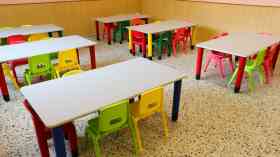Communications improve learning and safety
Good, reliable communications supports almost every business and institution. It is less well known, perhaps, how important a role communication plays in educational establishments.
Macmillan Academy in Middlesbrough, for example, wanted a discreet but effective communications system that could instantly deliver complex messages – such as full details of any incident – to the right people. Hopwood Hall College, near Manchester, uses communications equipment to ensure the safety of its hearing impaired students and visitors. Mount St Mary’s School in Leeds, uses DECT communications systems for instant two-way speech conversations, message reporting and integrated staff alarm button on the handset to report incidents and maintain pupil safety.
In other schools and universities, communications systems can be the best way to prevent unnecessary site evacuations. By linking the fire, fire door and building alarms into a site-wide communications and safety system, fire marshals can be quickly deployed to the site of an alarm to assess its severity.
All the above examples are supported by wireless on-site communications and management software. An effective system needs to be reliable, fast and discreet to minimise disturbance.
Supervision and Safety
Sometimes, and for a variety of reasons, video surveillance is needed, for example to resist and deter vandalism. Brampton Manor School in the London Borough of Newham has taken this route to ensure pupil and staff safety. When incidents occur, authorised staff can watch recorded video to determine the cause and perhaps apprehend the person at fault.
Reliable, effective and flexible communications are the best ways to protect the safety of students and staff. While systems need to be effective, responsive and fast, they should also be discreet to minimise disturbance.
Goodenough College, London, uses a flexible communications system with personal pagers for selective calling, fire and building alarm management; these summon immediate support form appropriate personnel. Facilities management is one of the functions that an appropriate on-site wireless communications system will perform, if it is advanced and integrated to the building alarms, fire doors, etc.
If as large an organisation as the Open University, which has a 112 acre site and 54 buildings, coordinating staff and students is complex. A site-wide communications system that does not rely on mobile phone signal strength can be the answer.
Integrated system
Many schools use an integrated on-site wireless system to minimise unnecessary evacuations when a fire alarm happens. Some such alarms are real and need immediate response, some are malicious, and some accidental. All need prompt evaluation by trained staff before the entire establishment is evacuated for no reason.
Increasingly schools are looking to integrate their communications. Available software packages can provide a vital link between front office, faculty and teaching staff so everyone, from first aiders to maintenance staff, can be contacted instantly. They do this by integrating all a school’s communications to ensure all key people who need to know, do know – right away.
The software also links to schools’ fire alarms, panic buttons and security doors and can send automated alerts to relevant staff as soon as an alarm is sounded. Text messages can be sent, for example to summon first aiders, the fire marshal or a management team to an incident.
What to look for
The best systems work with all sorts of communications equipment, including pagers, cordless DECT digital phones, two-way radios and even phones. They can also send messages and alarms off-site, for example to maintenance or safety personnel.
Ideally, the system should allow both SMS messaging and DDA messaging to work with hard of hearing staff and pupils.
A log of messages provides useful data. For example, it can help to highlight problem areas to school managers, such as showing how many times first-aiders were called to a particular class and so on.
Some systems can be configured to escalate situations. In such a case, if the system does not receive an ‘all clear’ from the fire marshal team following a fire alarm, it automatically alerts the emergency services.
Achieving Best Value
Schools need to look for a system that is both easy to install and operate. Staff should be able to use it after minimal training and running costs also need to be low.
A good communications system can quickly become a part of the school’s fabric, enhancing communications by allowing messages to be composed on a computer and sent quickly, discreetly and efficiently to individual staff members or groups of people. For example, it can be used to contact relevant people when an incident happens, when a meeting is called or even when someone wants to be reminded of a planned task. Simple tasks like reminding staff about appointments and meetings are an integral function of such a communications system.
Whatever communications system you choose, it should be easily installed and used with minimal training. The supplier should, however, offer training and continuing support to ease implementation. It is economical to buy and running costs are virtually nil.
Latest News
19/12/2025 - 09:54
The Education Committee has expanded its ongoing inquiry into the early years sector to examine how safeguarding can be strengthened in early years settings.
18/12/2025 - 09:25
The UK will be rejoining the Erasmus programme in 2027, following a package of agreements with the EU.
17/12/2025 - 09:31
Ofqual has fined exam board Pearson more than £2 million in total for serious breaches in three separate cases between 2019 and 2023 which collectively affected tens of thousands of students.
16/12/2025 - 09:19
The average funding rates will increase by 4.3% for under 2s, and by almost 5% for 3-and-4-year-olds.
15/12/2025 - 10:30
Local colleges are set to receive £570 million in government funding to expand training facilities in areas such as construction and engineering.







